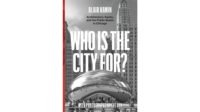Books
Albert Narath Unearths the Rich History of Solar Adobe Architecture
Review: ‘Solar Adobe: Energy, Ecology, and Earthen Architecture’ by Albert Narath

“A few people felt that only so much could be said about adobe.” This quote, from an adobe building magazine achieving its one-year anniversary in 1975, forms an epigraph to the introduction to Albert Narath’s new book, Solar Adobe. A reader returning to the quote after finishing the book is almost certain to laugh. Oh, how wrong they were! Subtitled Energy, Ecology, and Earthen Architecture, the book traces a largely forgotten yet freshly relevant period of experimentation with passive-solar design and adobe structures in the American Southwest of the 1970s, spotlighting the rich variety of characters, settings, themes, and narratives that contribute to this storied material’s depth of meaning.
The author’s aim is to explore the ways in which wide-ranging engagements with this particular building material raised critical questions: about how architecture is practiced in a time of environmental crisis, whom it should benefit, and what a building is, or could become, as an object of energy-conscious design. Narath does this across four chapters, each recounting the ’70s adobe scene from a different perspective, with black-and-white illustrations from the period supplementing the text.
A chapter entitled “Mud Machines” sets solar adobe in the historical context of environmental-control technologies in the United States. Beginning with a case study of an emblematic house designed in 1973 by the architect William Lumpkins, the chapter grapples with the apparent paradoxes of the romantic, vernacular-inspired “Spanish-Pueblo” building style and the rigorous scientific analysis of solar adobe (by former weapons engineers at Los Alamos Labs’ newly formed Solar Research Group) as, essentially, a finely tuned, inhabitable solar collector. The chapter goes on to situate solar adobe experimentation and discourse as part of the ascendant notion of “appropriate technology” in 1960s and ’70s America.
From an ecopolitical perspective, a chapter on “Earth Ecologies” illuminates the emergence of a design methodology for taking account of the environmental challenges presented by postwar urban expansion. In particular, the chapter focuses on the work of the architect and academic Ralph Knowles, whose research investigated adobe construction, ancient and modern, through the lens of ecosystem formation and maintenance. Cofounder of the University of Southern California’s Natural Forces Laboratory, Knowles was influential in fostering the use of environmental data to analyze the interrelation of such variables as sun, wind, and water with building form.
A subsequent chapter, “In and Out of Sight,” examines the positioning of Indigenous architecture as a counter-precedent to modern urban-planning practices and their problematic legacy. Considering midcentury art-historic views of earthen building, the chapter centers on Yale academic Vincent Scully’s perception—and deliberate image-making—of Pueblo architecture as a harmonious interplay of natural and human-made environments, and as a picture of architectural and cultural coherence. Narath then juxtaposes Scully’s interpretations with those of architectural historian Reyner Banham, who has more consciousness of the hazards of “paleface attempts to focus ‘the Indian phenomenon,’” to query notions of evidence, observation, and positionality.
Throughout the book, Narath tells stories of the solar adobe movement—its thinkers, innovators, paradoxes, and potential—while keeping in the foreground the issues of appropriation of Indigenous culture and legitimacy of voice. The fourth chapter, “Mud/HUD,” brings these concerns center stage, showcasing the work of a group of Indigenous scholars, designers, and preservationists, including the foundational work of the Isleta planner and scholar Theodore Jojola, in confronting what seems to have been the idiocy, obstinacy, and sheer arrogance of official housing policies as they pertained to—or rather dismissed and obstructed—Indigenous nations’ heritage of adobe. The reader is left dumbfounded.
Beyond an audience that has a particular interest in earthen architecture, Solar Adobe will appeal to those curious to understand an underappreciated period in the history of architecture and to consider perhaps familiar themes of sustainability from a new perspective. More broadly, the book offers an object study in a material’s potential for meaning.



